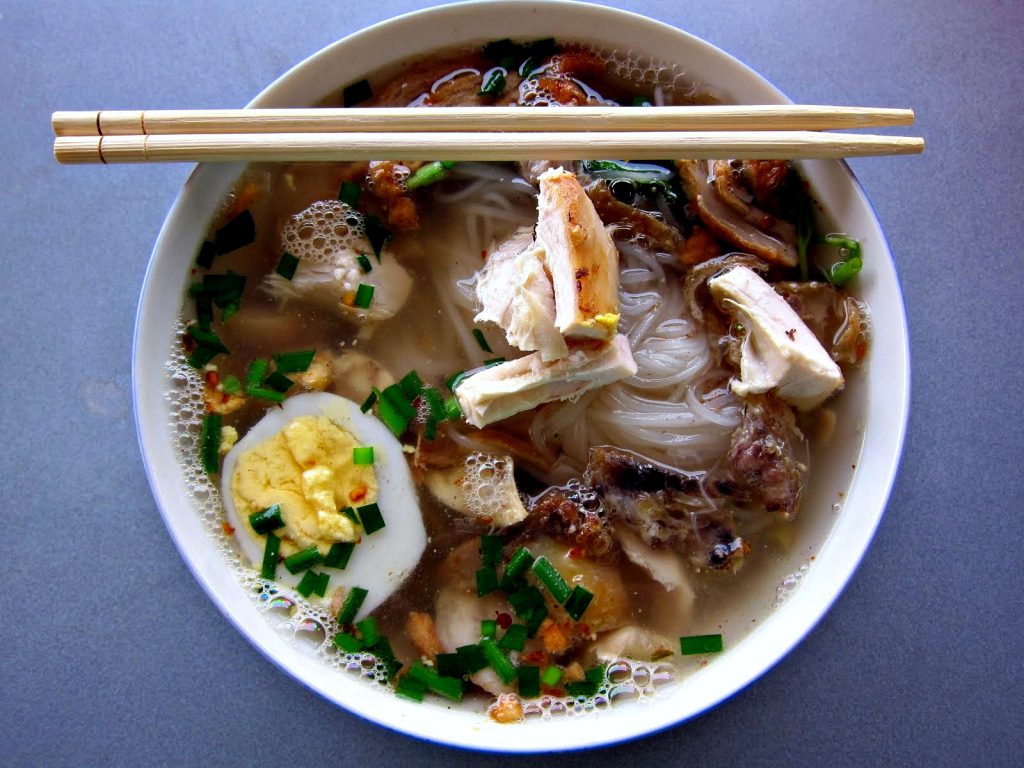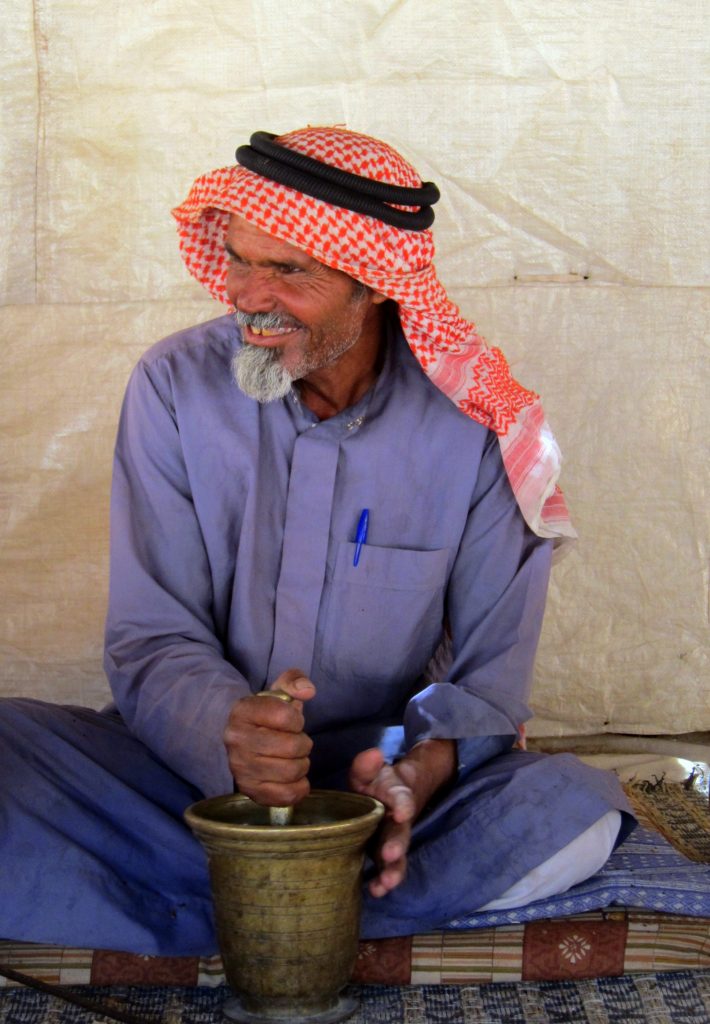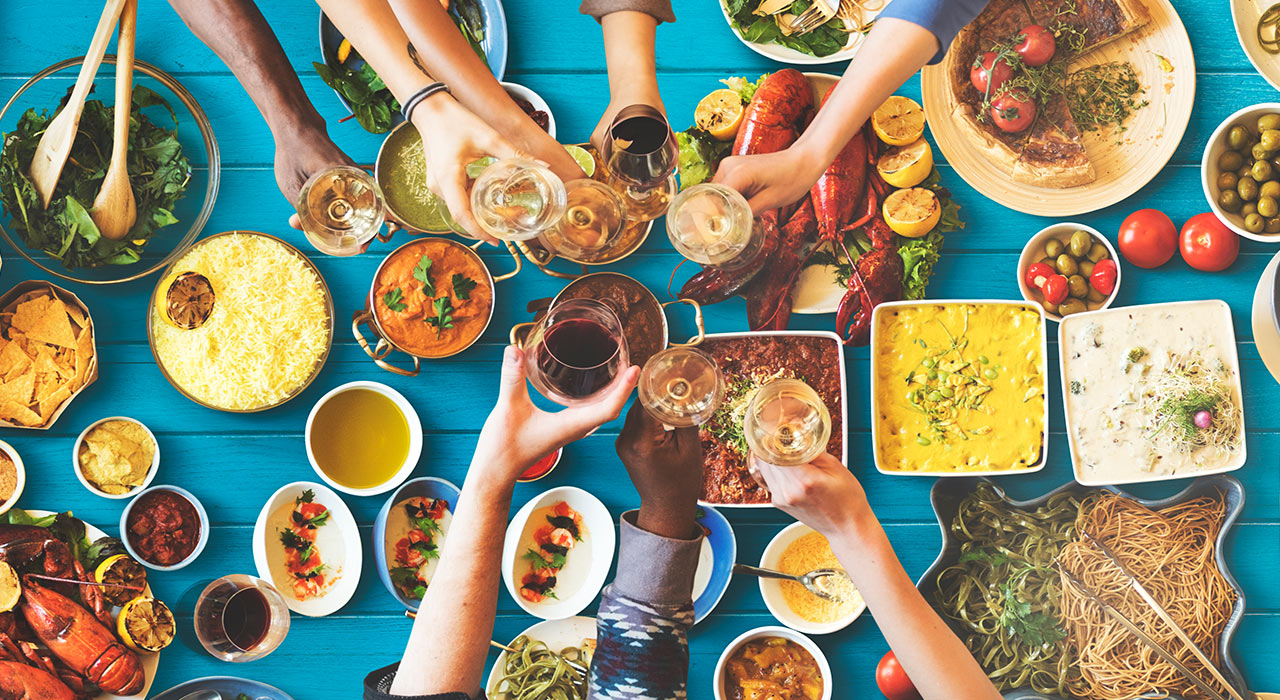An International guide to food and eating etiquette

As you all know, I like to delve into interesting cultural observations as I travel, as the local culture, and especially time with its people, is what travel is all about for me. Other than speaking with people (the general focus of this blog), there are so many ways to explore other cultures, one of which I think is certainly worth segwaying into today, thanks to my friend Jodi!
Jodi Ettenberg is a former lawyer who quit her job in 2008 to travel the world. Now a writer, photographer and soup eater, she shares the stories behind the foods people eat on her site, Legal Nomads. For those visiting Vietnam, she will be running small-group food walks in Saigon in January and February 2014. She gets the shakes if she goes too long without sticky rice.
Now for all the foodies out there, enjoy her take on international food eating etiquette! Over to you Jodi!
—————
You’ve finally tracked down that terrific street stall in Malaysia that everyone has told you to try. You’ve soaked up the stall’s ambiance – a perpetual low-grade murmur of multiple conversations happening at once, swift and efficient turnover, and families waiting for their morning meal.
Your roti canai arrives steaming, and you tear off a piece. Using your left hand, you dip the roti pancake into the rich curry sauce that accompanies it, mopping up as much as you can in the process.
Your slo-mo surveillance of the food stall comes to an end as your eyes focus on your dining companion’s face. A businessman from Malaysia who has also studied in London and lived abroad, he is looking at you with a mixture of confusion and disgust.
“So…” he says to you, one eyebrow raised, “Why are you eating with your dirty hand?”
Using your right hand
If life were the movies, this moment would signal the music to stop playing and a lone waiter would drop a glass in the distance. This is a true story from a morning meal in Kuala Lumpur, where as a lefty I forgot to abide by the eating-with-your-right-hand rule for the region and most of the subcontinent, where the left hand is often associated with bathroom ablutions. While the soundtrack did stop in my head, no glasses were harmed in the process.
Instead, embarrassed, I stammered something about how I’m a leftie so technically wouldn’t my right hand be the dirty hand regardless? My dining companion stared at me, owl-like, unblinking and unamused. I dutifully switched course and picked up the roti – which suddenly didn’t seem as magical – with my right hand.

I generally write about the stories behind our meals and where you can find terrific cheap eats without getting sick. But for a site focused on language such as this one, I wanted to address a different side to the food experience: some of the etiquette rules from around the world that make eating abroad so fascinating.
The above anecdote might seem antiquated to some, but it happened in 2009. And while many countries have changed the way they eat with the times (our midday lunch meal is itself a fairly new development), most destinations still follow codes of behavior that may seem foreign to us. Of course, learning about them is part of the fun.
Will not following these rules get you into trouble? Only in rare cases. But I’d argue that following them does ingratiate you in the eyes of your hosts and fellow diners, setting you apart as someone who respects local mores and has taken time to learn about how people eat. In turn, this knowledge often leads to a conversation, a dinner invitation or an impromptu cooking lesson.
In contrast, ignoring the food rules leads to hilarious and awkward silences like the one that followed my “right hand” comment above.
Thailand
In Thailand, for example, many people will order a pad Thai and ask for chopsticks, incorrectly assuming that people are giving them a fork and spoon because they are foreigners. In reality, however, Thailand’s cutlery options include more than we realize — a spoon and fork, chopsticks, or your hands, depending on the meal.
Customarily, rice-based and dry noodle dishes in Thailand are eaten with a spoon and a fork, with the spoon as the star of the show. Food is shoveled onto the spoon, which is your primary instrument of deliciousness. In contrast, chopsticks are usually available when eating noodle soups, or when you are in a restaurant from a different Asian country (e.g. a Chinese restaruant). In the Northeast of Thailand (also called Isaan), food is frequently eaten with the right hand and sticky rice is used to scoop up the salad or dips.
Jordan and other Asian countries
In another food example, in Jordan I quickly learned when drinking coffee with Bedouin that my usual “no thanks” refrain would not work in stopping my cup’s refills. While I said no, to my confusion more coffee was always added with a smile. Eventually I was told that this would continue to happen until I signaled that I was done drinking by shaking my cup from side to side.

While many of these table rules go back to older traditions, some are still relevant for practices today. For example, most Asian countries show respect for their ancestors by setting up small altars with burning incense, often stuck vertically in a bowl of rice. Thus, the requirement that we don’t stick our chopsticks face down into a bowl of rice – it’s how rice is offered to the dead. The same goes for passing food with your chopsticks to someone else; after cremation, a deceased person’s remains are often passed in this way between members of the family. (See this photo from Japan post-tsunami for an example).

Russia
Sometimes it is actual table manners that merit attentiveness. In Russia, putting your hands in your lap while eating is considered impolite (or, as I was asked, “what exactly are your hands doing?”), whereas I was brought up to keep my hands off the tabletop. Word to the wise for those heading to Russia: put your wrists on the edge of the table (not in your lap) while eating.
[Benny's comment: The same thing happened to me in France…]
These small quirks are excellent ways to learn more about a culture and the traditions baked into its food norms.
In the end, travel for me is about trying to understand the spirit and movement of a place as best as possible, and food is an excellent lens through which to funnel that knowledge. I encourage everyone to try all of the foods they can, but also to look around while doing so – how are the people eating? What do families do when serving each other food? How do holidays or festivals affect everyday eating patterns? When taken together, observation and adventurous eating can teach more than I ever thought possible, and also provide a theme and purpose to my travel goals.
For those interested in reading more, please see the resources below. Wishing you many delicious meals in the future.
-Jodi
Resources
These are but a few examples from a myriad of others that exist. The best way to learn is to ask questions on the ground, but for a second best option, the following links provide helpful hints, tips and stories for these etiquette rules and much more.
- Resources for Food Travelers: http://www.legalnomads.com/food (books, sites, packing lists and more), as well as my book The Food Traveler’s Handbook: How to Find Cheap, Safe and Delicious Food Anywhere in the World.
- International Dining Etiquette, divided by country: http://www.etiquettescholar.com/dining_etiquette/international_dining_etiquette.html
- Dining etiquette around the world: http://www.huffingtonpost.com/2013/07/11/dining-etiquette-around-the-world_n_3567015.html
- Wikipedia’s thorough chopstick etiquette page: http://en.wikipedia.org/wiki/Chopstick#Etiquette
- Cultural etiquette around the world from eDiplomat: http://www.ediplomat.com/np/cultural_etiquette/cultural_etiquette.htm
- Business etiquette and culture around the world: http://www.cyborlink.com/default.htm
- And a fun bonus: hand gestures you want to avoid (or get right!) as you travel: http://www.theatlantic.com/international/archive/2011/09/the-worlds-rudest-hand-gestures/245238



Social